Aquarium snails are eternal companions of fish and feel great not only in ulitarii, but also in shared tanks. Despite the fact that snails are for the most part considered useful creatures, debates about the advisability of their presence in home aquariums have been ongoing for a long time. That is why the issue of keeping snails remains quite relevant, and it is especially interesting for beginner aquarists.
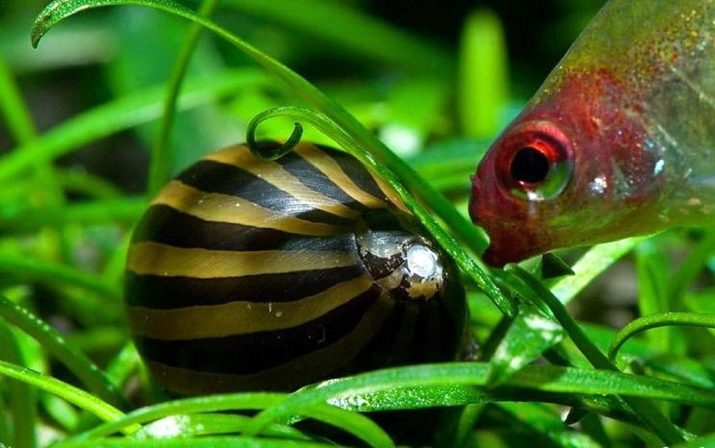
Benefit and harm
In order to understand whether snails are needed in a home aquarium, it is necessary to consider the positive and negative aspects of their stay in a reservoir. Below are a number of undoubted advantages that make these amazing creatures extremely popular.
- Snails are real orderlies in ponds. They eat the food not eaten by fish and pick up dead particles of aquatic vegetation. Due to the small size of the snail easily penetrate into inaccessible places and clean them of organic residues. In this they are far superior to catfish orderlies, for which they are appreciated by aquarists. Many species of snails eat dead fish and prevent water from deteriorating.
- Snails look very organically in an artificial reservoir and give it a more natural look. A wide variety of shapes and colors of shells allows you to effectively decorate the aquarium and revive even the most boring pond.
- Snails are very interesting to watch. They literally enchant the observer with their slow movements and help relax after a hard day.
- Often, snails act as indicators of the state of the ecosystem and in time signal to the host about negative changes.For example, with a low oxygen content, many of them float to the surface of the water, letting you know that it is time to turn on the aerator. This behavior forces the owners to take emergency measures to normalize the conditions of keeping pets in the aquarium, which saves many species of fish from death.
- The next function of mollusks is that they often act as food for the predatory inhabitants of the reservoir. This is more true for small snails and caviar, which are a delicious treat for carnivorous species.
- Another important role of snails is loosening the soil. As a result of this procedure, it is saturated with oxygen, which prevents the formation of hydrogen sulfide and prevents the stagnation of the reservoir.
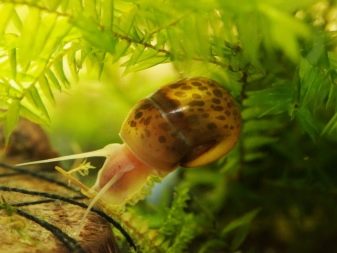
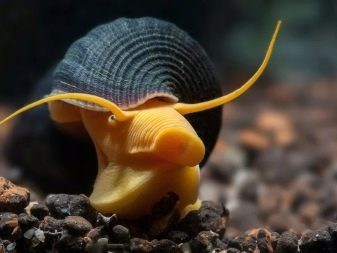
However, along with the obvious advantages of snails, there are serious disadvantages, because of which many aquarists refuse to keep them.
- Many types of snails, although they are reservoir cleaners, themselves pollute them greatly. This is due to the release of a large amount of mucus, which, dissolving in water, leads to its clouding and foaming.
- In the absence of algae residues on the aquarium glass, the snails begin to devour whole plants. The problem becomes visible to the naked eye when the number of mollusks is too high, when they deal with lush plants in a matter of minutes. Mollusks can eat fish eggs left unattended, preventing other inhabitants of the aquarium from reproducing normally.
- If the snail died and was not caught in time by the owner, then its body quickly begins to decompose, thereby polluting the aquarium water and upsetting the biological balance of a closed ecosystem.
- Due to the high fecundity of snails, overpopulation of the reservoir occurs very quickly. In a short time, the population reaches enormous size, and if measures are not taken to regulate the number, the colony can cause irreparable damage to the reservoir. When there are too many mollusks, the amount of oxygen dissolved in water decreases and causes a state of stress in the fish. Moreover, mollusks literally attack the plants and mercilessly eat them. Another problem of uncontrolled breeding is the large amount of excrement secreted by snails. Because of this, it is necessary to clean the soil with a siphon much more often.
- Snails can be carriers of worms and other parasites that are dangerous to other members of the community. This is especially true for specimens accidentally caught in the aquarium brought with river sand or algae from a natural reservoir.
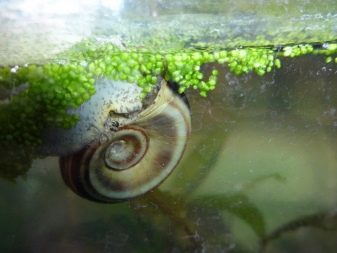
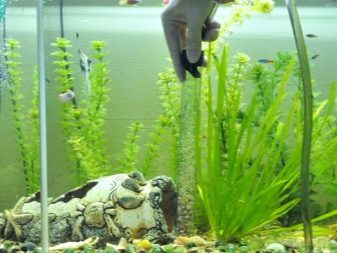
Kinds
Today, there are a huge number of aquarium snails. Below are the most popular types that are not demanding in care, the content of which will be affordable even for a beginner.
Ampullaria
This species is represented by beautiful, vibrant and clearly visible mollusks, which are distinguished by large body sizes and grow over 7 cm. The color of adult individuals is quite intense and is represented by yellow, blue, burgundy, black and brown tones. The snail has a long expressive mustache. Nature endowed this species with a special siphon tube through which the mollusk has the ability to breathe when it does not want to be on the surface. To do this, he puts one end of the tube out of the water and sucks in air. Due to the large size and the need to move their rather heavy body, ampullaries are forced to eat well and are known as one of the most gluttonous species. They are grown in water at 20-28 degrees, and there are no special requirements for water hardness and acidity.
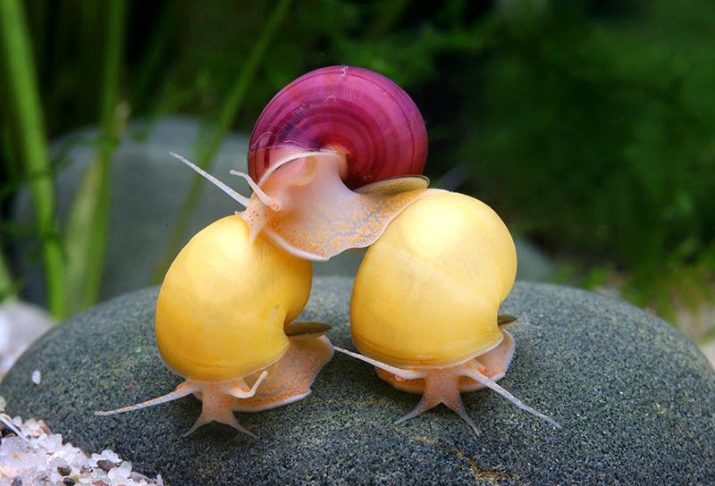
Nerits
The variety belongs to the category of tropical and quite demanding in care. Striped shells of adults are painted in olive-black with golden colors and look very elegant. Growing such mollusks is not easy. For this, clean and fresh water with a temperature of 25-27 degrees should always be present in the tank, and there should be an air gap above its surface. Neritins love to eat algae and are quite useful in heavily overgrown reservoirs.

An important feature of the species is the inability to breed in unsalted water. Caviar should be laid only in salt water, otherwise it will simply die.
Fiza
This variety of snails is compact in size and has a round, pointed at the end of the shell. Coloring is represented by gray-brown or brown tones with golden spots. But despite its attractive appearance, this species has 2 significant drawbacks. The first consists in increased mucus formation, and the second - in severe gluttony. No matter how much the snail is fed, it cannot get enough. As a result, gnawed thick stalks of algae and eaten leaves.
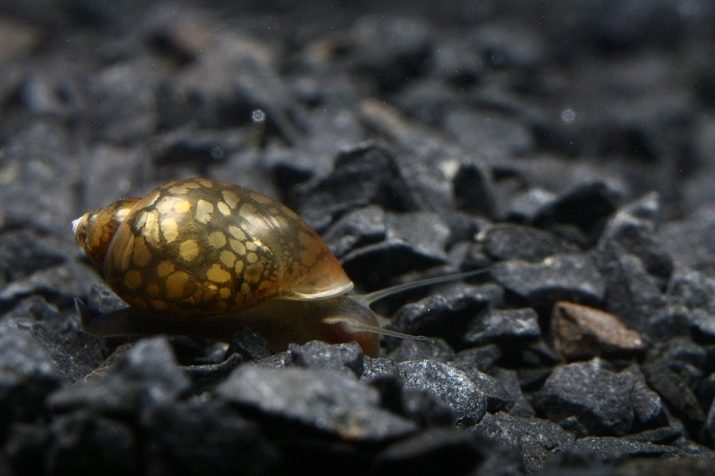
Fiza is often used as an orderly for small aquariums, where she copes with cleaning the bottom in a couple of days.
Melania
This species visually differs from other varieties. Their sink resembles a cone, rarely grows to 3.5 cm and has increased strength. Melania lead a nocturnal lifestyle, and in the daytime burrow into the sand and gain strength for night outings. Due to this, the soil in the tank is loosened and ventilated daily, which excludes its caking and stagnation. The color of these snails resembles the color of the soil, which is why it is difficult to notice them in the aquarium.
A characteristic feature of melting is rapid reproduction, the uncontrollability of which often leads to the growth of the population to unimaginable sizes. In general, this variety of mollusks is unpretentious in care, the only thing that a snail requires is that the water temperature be in the range of 18-28 degrees. The remaining parameters are not too important for them. The same applies to food: melania can be satisfied with the remains of fish food and leaves of underwater plants.
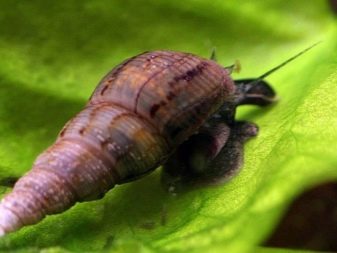
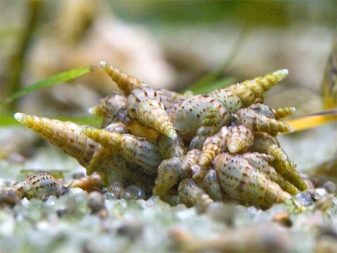
Coil
This variety of snails is represented by attractive and harmless individuals that will never do any harm to the aquarium. Their red-brown shell harmoniously combines with underwater surroundings and gives it a greater naturalness. Coils are considered to be effective orderlies for water bodies, eating algae that are extremely unsuitable for further growth. They will gladly eat the stems that have been eaten by other fish, gnawed leaves and rotting parts of underwater plantations.
Fresh and healthy plants they do not use. This is due to the peculiarity of the structure of their oral apparatus, which can not perceive solid and juicy greens, and can only fray softened, starting to rot fragments. In addition, coils react very sensitively to deterioration of fluid quality and can be used as natural indicators.
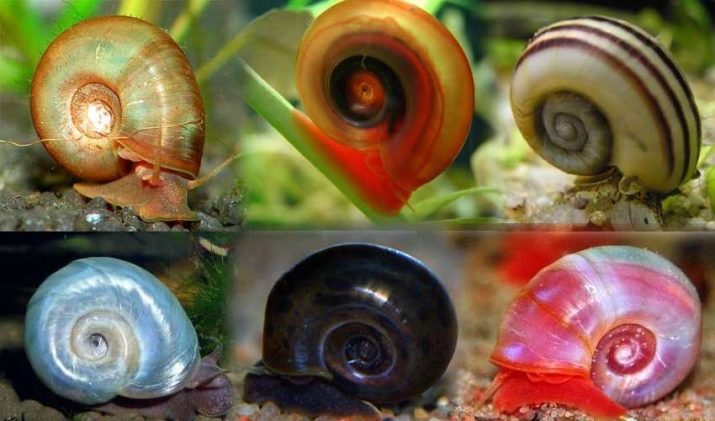
If they surfaced and float on the surface for a long time, it means that the water is contaminated and needs urgent treatment.
Helena
This variety of snails belongs to the category of predators and is often used to regulate livestock. This method allows you to control the number of aquarium snails without resorting to chemicals. Helena does not belong to the category of hermaphrodites, therefore both females and males are required for its breeding. These mollusks are big fans of digging into the ground and spending enough time there. Because of this, it is recommended to use river sand or fine gravel as soil. Helens are rather small snails, the diameter of their shell barely grows up to 2 cm. The shell itself has a cone shape and is painted yellow with a spectacular spiral strip of brown color.
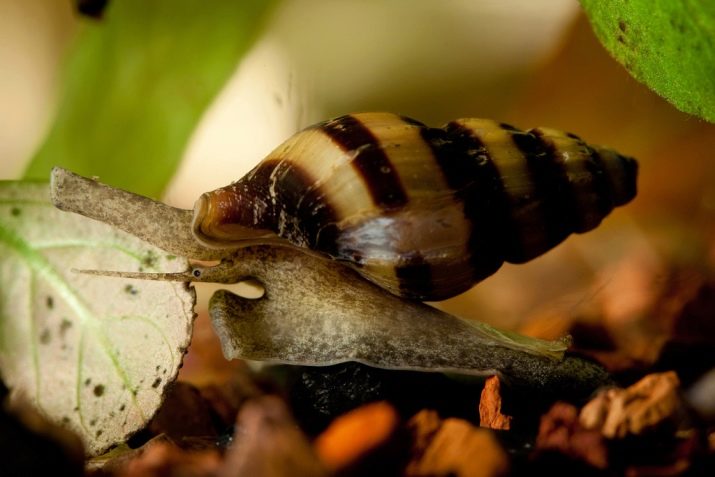
Tilomelania
This variety of mollusks has an extraordinary appearance and a wide variety of forms.The shell is often equipped with spikes or outgrowths, it can be absolutely smooth or have pointed edges and beautiful curls. The body of tylomelania is also quite unusually colored and can be black or orange into a small yellow and white dot. This type of mollusk is quite demanding in care, needs clean water and a spacious tank.
Tilomilania also does not accept too dense vegetation, since it reaches 12 cm in length and needs free space. These mollusks are dioecious viviparous creatures and have low fecundity. At one time, they carry one egg each, from which a small few juveniles appear. All tilomelania are quite voracious, which is why they need to be fed at least 2-3 times.
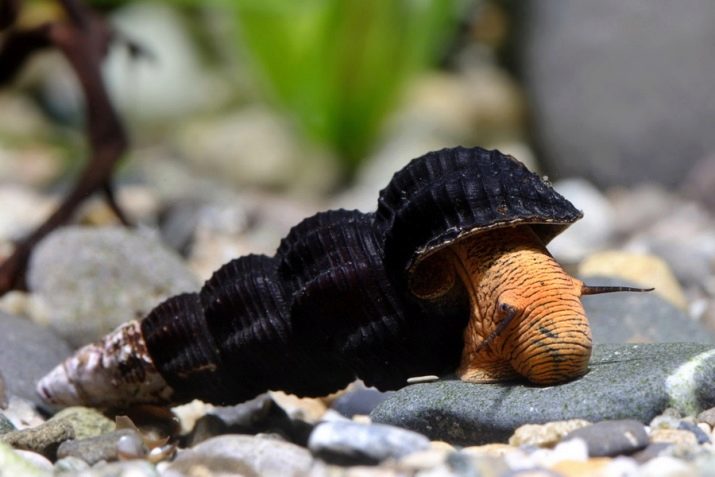
Shellfish do not tolerate dim light and need soft acidic water.
Marisa
These are giant snails, the shell of which grows up to 6 cm in diameter. Marises adore thick healthy plants and sometimes eat them to the very root. To continue the genus, male and female individuals are required. The female lays eggs on the walls of the tank or leaves, and the eggs themselves are represented by a jelly-like substance with small snails inside. Marises are very vagaries and need water at a temperature of 21-25 degrees, with an acidity level of 7.5 to 7.8 pH. From above, an aquarium with marises must be covered, as they tend to get out and run the risk of being crushed.
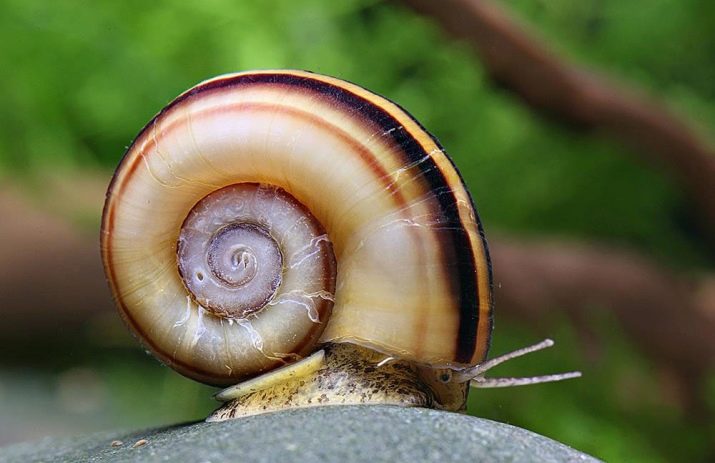
However, it is impossible to close the tank tightly: the snails breathe air, so the slot for its entry must be left behind.
Horned snails
This species got its name due to the presence of original sharp horns, very durable and rough to the touch. Thanks to a beautiful yellow-black shell with a diameter of about 1 cm, such an individual will never go unnoticed in a common tank. The horned snail is highly mobile and very active. However, the description of this species will be incomplete without mentioning the character traits of these creatures. They love to run away from the aquarium and travel by land.
therefore When purchasing horned snails for the home community, you need to buy a net or a transparent lid and cover it with a tank. In general, horned snails are quite unpretentious. However, when breeding them, some difficulties may arise. The fact is that such mollusks breed exclusively in seawater. In freshwater reservoirs, their caviar is not viable and quickly dies.

Spicy
The shell of these snails is painted yellow or white and is endowed with a dark brown strip, twisting in a spiral. The leg can be either yellow or brown, and have several dark spots. Outwardly, spiksi are somewhat reminiscent of ampullar, however, they have a number of significant differences in structure and behavior. Firstly, they do not grow as large as ampullariums, and barely reach 3 cm. Secondly, they lack a breathing tube, and their whiskers are much longer.
Finally, the eggs of the snail are laid on driftwood, stones, and leaf plates, so they do not need to go on land for reproduction. In addition, the spiks move much faster than the ampoule, and raise their shell to the maximum height above the surface on which they crawl. In the daytime, they like to bury themselves in the soil layer and lie in it until dark.
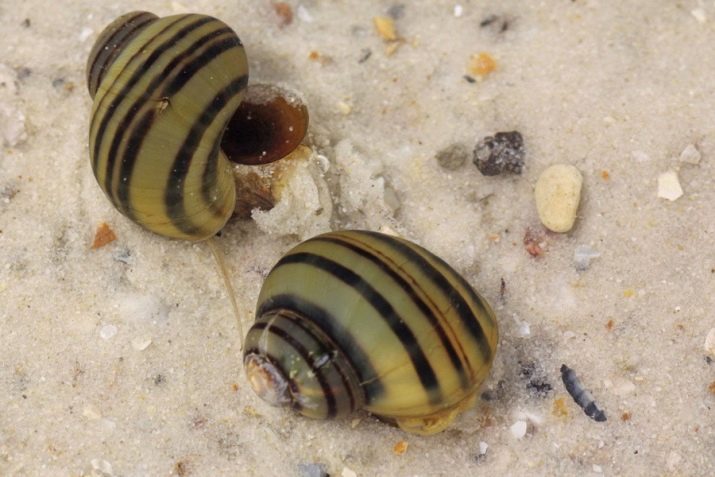
The peak of spiksi activity occurs at night, however, in ungrounded reservoirs the difference between daytime and nighttime activity is erased.
Where do snails come from in the aquarium?
Aquarium snails that eat up the remnants of dead organics and thereby cleanse the body of water are very useful creatures and are specially acquired by the owners of underwater communities. However, there are often situations in which mollusks appear in the aquarium suddenly, when no one planned to put them there. This phenomenon is quite common, and is explained very simply. Uninvited guests enter the tank along with uncultivated soil or plants. In the first case, the sand was simply not subjected to heat treatment, and the small snail got into the aquarium intact. Often, mollusks enter the reservoir in the form of caviar, which was deposited by the inhabitants of the previous reservoir on the leaves of freshly bought algae.
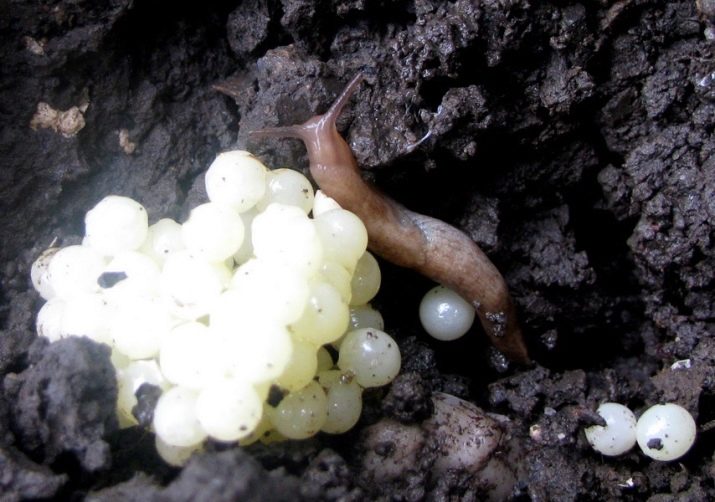
Small snails are poorly distinguishable in dense thickets of underwater vegetation, because of which the owner of the reservoir may not be aware for a long time that he has snails. And only an experienced aquarist is able to notice on the leaves of plants a small, pebble-like solid placer of black color. After a few days, it becomes clear that this is nothing but young snails. Overgrowth begins to move quickly around the aquarium, the delicate body of mollusks becomes clearly distinguishable.
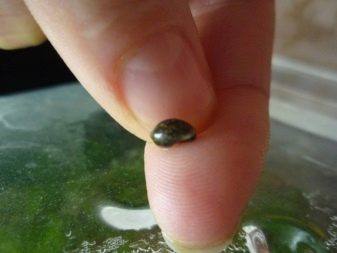
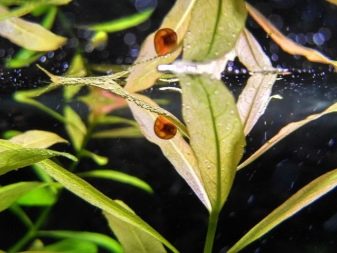
In order to prevent strangers from entering the reservoir, it is necessary to carefully examine new plants before placing them in the aquarium, as well as rinse well and then calcine new soil in the oven.
Content Rules
Most aquarium snails quickly adapt to the microclimate of the reservoir and live well in it. These are quite hardy and healthy creatures that do not require individual care, eat the remains of fish food and bring an undoubted benefit to the aquarium ecosystem. The only thing you need to carefully monitor is the quality of the water. It should be moderately hard and contain a sufficient amount of calcium and other mineral salts necessary for the mollusks to build the shell. In soft water, the sink begins to soften and deform. There is an opinion that too large a number of mollusks intensively pulls the necessary salts from the water, which is why water hardness is significantly reduced.
The best indicators are acidity from 6.5 to 7.8 pH, hardness from 10 to 15 dGH and temperatures above 20 degrees. In addition, for every 8-10 liters of liquid should be no more than 1 shellfish. Snails should be purchased exclusively at pet stores, followed by quarantine.

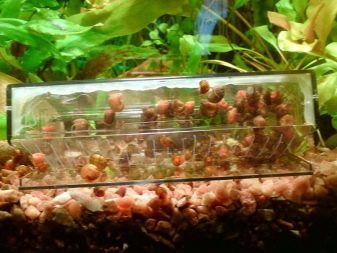
It is not necessary to select and place animals from natural reservoirs in the aquarium, since such individuals are often sources of infection and can infect other inhabitants of the reservoir.
The next important point in the content of snails is the type of food. Most of them are omnivorous, because of which their presence in the aquarium does not lead to additional costs and does not cause trouble. They eat fish food as well as natural plant foods equally well. However, omnivorous has a reverse side and often leads to damage and the complete destruction of a large number of underwater vegetation. This is especially true for the floppy species of snails living in the same aquarium with too fast and nimble fish that quickly eat up the whole feed. Snails in this situation have no choice but to devour algae.
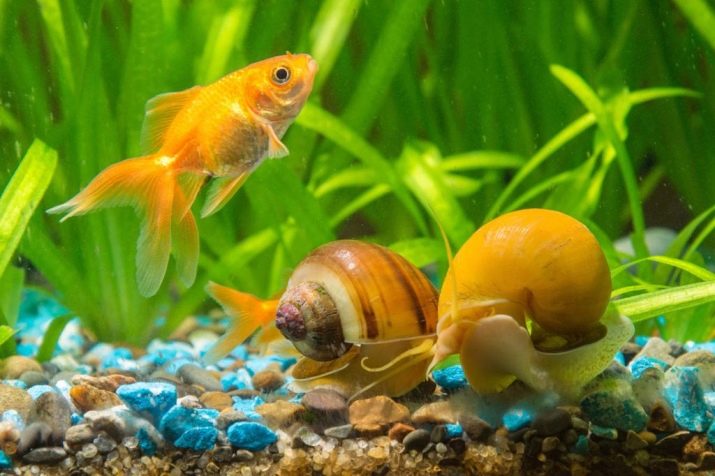
In this case, you can equip a separate aquarium for snails and plant it with fleshy algae. For this, large-leaved plants are usually taken, to which the snails can not do much harm. The snails themselves should be fed with special feeds or natural food: carrots, cabbage, lettuce, cucumber and crumbs of white bread. By the way, these same products can be used when keeping snails in a general aquarium. Such foods do not eat fish, so they will not pretend to eat snails. Carnivorous species of mollusks are additionally fed with slices of boiled beef.
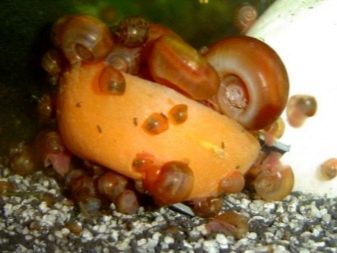
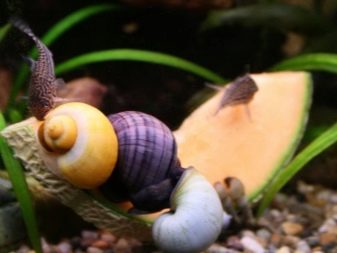
Breeding
When favorable conditions are created, reproduction in snails occurs without any difficulties. Shellfish lay eggs on stones, leaves of plants or on aquarium glass, just above the liquid level. Initially, eggs resemble jelly-like balls, from which a few days later small mollusks are born.If you need to quickly get offspring, the process can be artificially accelerated. To do this, take a container of 30 liters and fill it with settled water. Then several floating algae are placed there and 3-4 snails are planted. They are fed twice a day, using fish food, bread, cabbage leaf, boiled carrots and potatoes.
Further, the mollusks are carefully watched and waiting for one of the individuals to begin to lay eggs. When breeding bisexual species, this individual should be noted in some way, in order to subsequently know exactly where the female is. Many species of snails make clutch late in the evening, so observation should be intensified during this period. Some snails, for example, ampularia, lay directly on the surface of the water.
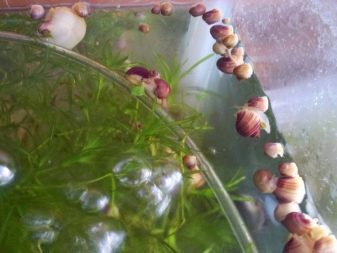
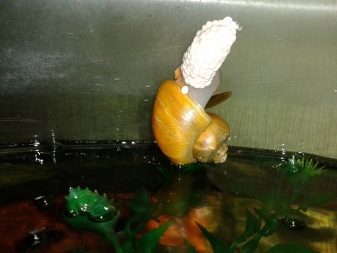
In no case is it possible to touch the laid eggs, except in those situations when the eggs swam too close to the lighting device and may die from elevated temperature. In this case, you need to carefully place a piece of foam under the masonry and tow it to a safe distance. Then you should be patient and expect the appearance of young animals. The closer this event is, the darker the caviar will be. On average, snails mature in about 3 weeks.
The survival rate of newborn mollusks is generally very high, but if masonry is done in a common aquarium, then not everyone has a chance to survive. Most of them will be eaten by fish, and only a few kids can survive. With proper care and timely birth control, an adult can live up to 3 years. If the aquarium is overpopulated or the water temperature is too high, then the life span of snails is drastically reduced.
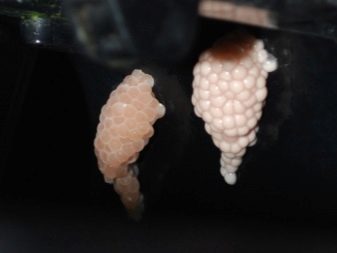
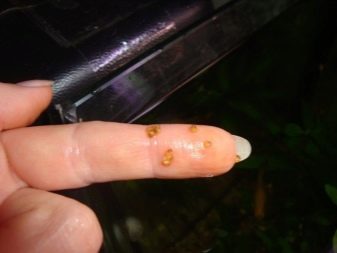
In the first case, this is due to stress and the struggle for resources, and in the second - the acceleration of metabolic processes from too warm water and, as a result, the rapid aging of the body.
Fish compatible
Adult snails are compatible with most fish species, while babies often need careful selection of neighbors. This is due to the fact that the newly hatched mollusks immediately eats up an adult fish. Barbecues are especially fond of enjoying fresh snails. They eat the newborns whole, and the young juveniles are first grabbed by the leg, then shaken from the sink and only then eat. As a result, an empty shell is lowered onto the ground. Tetradonts and many types of cichlids capture the mollusks in their mouths. They bite and spit out the shell, and then eat the contents.
Most small snails get along well with small and non-aggressive fish, and the only inconvenience for them is the attacks of nimble fish on their mustache. In this regard, one can often observe a situation when the snail, when the fish is approaching, reflexively presses them to the body.
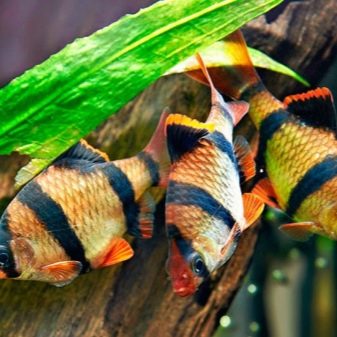
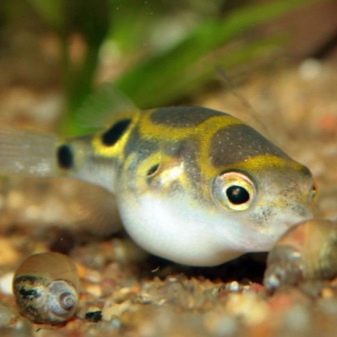
The rest of the cohabitation of snails with other inhabitants of the reservoir looks quite calm and does not cause the owner of the aquarium any trouble.
For the pros and cons of keeping aquarium snails, see the next video.










